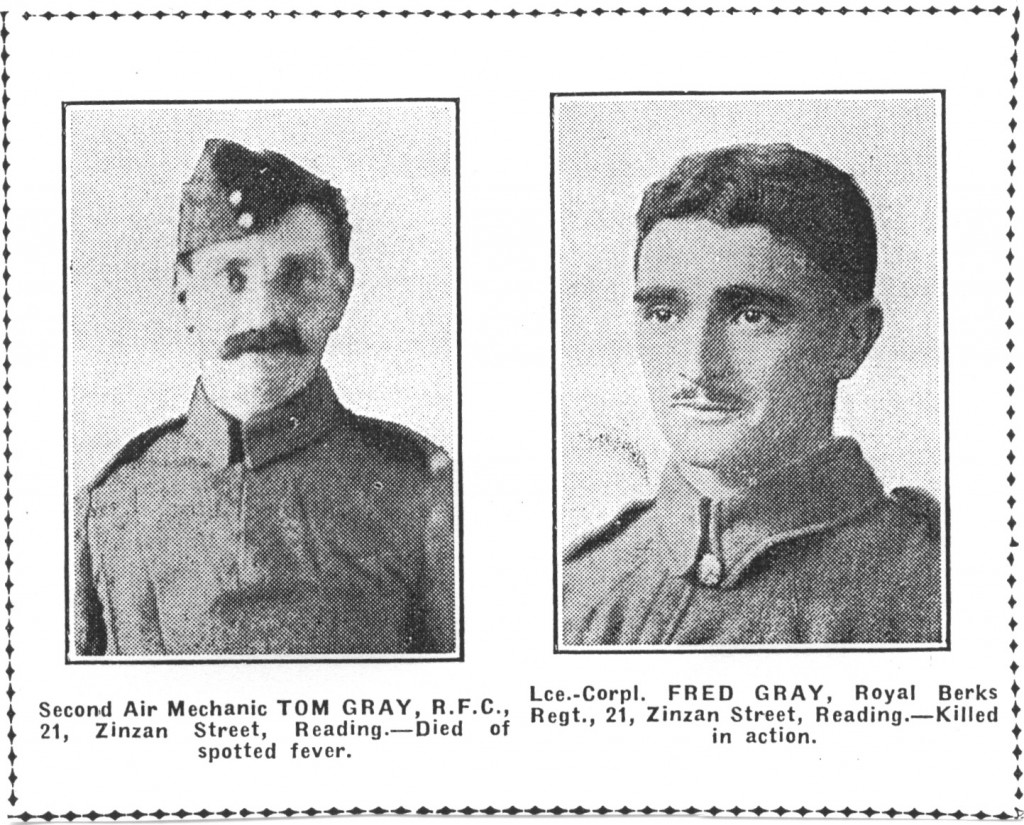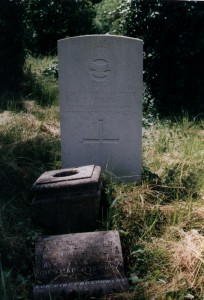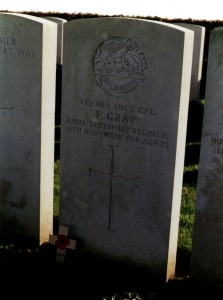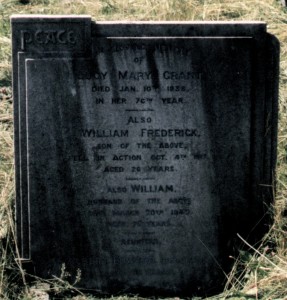Cecil Gregory
Private 48229
Duke of Cornwall’s Light Infantry (formerly Royal Warwickshire Regiment)
George Gregory
Private 20001136
Royal Berkshire Regiment
Division 44
 |
 |
Cecil and George Gregory, were the sons of Albert and Alice Gregory, of 29 Orchard Street, Reading. Theirs is a registered war grave and has a CWGC war pattern headstone, number 3275.
Cecil Gregory died of sickness on 12th December, 1917. Aged 18. He had been training at Salisbury Plain when he died from pneumonia.
The Chronicle August 4th 1916 reported that George Gregory had been wounded in his back and right arm and was being treated in Sheffield Hospital. He was 20 years of age. He died at home on 30th October 1918. He worked at the biscuit factory before the war and was in the Territorials. The report stated that he once had a very narrow escape after a mine explosion.
It is not known when he received his injuries or his age at death. Further research is needed to establish his service battalion. It is likely that he received his injuries on the Somme.
The 1911 census tells us that Albert Gregory was a labourer at the Biscuit factory. Albert and Alice had been married fifteen years and they had five children. George was the eldest and was a Tin Worker (probably Huntley, Bourne and Stevens). The other children, including Cecil, were in school. In addtion to George and Cecil, Albert and Alice had another son, Alfred and two daughters, Nellie and Doris.



